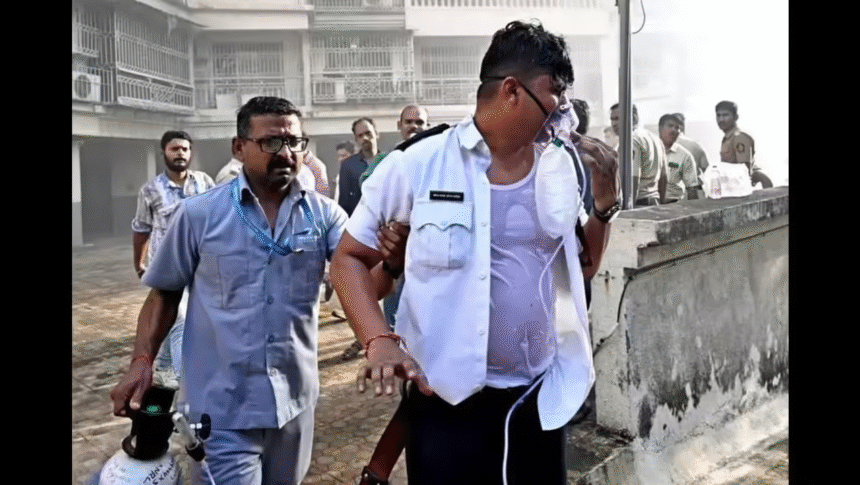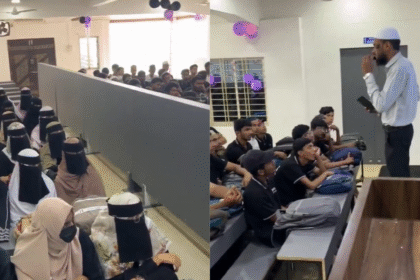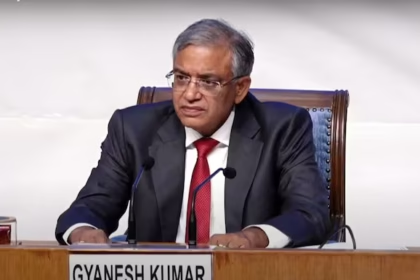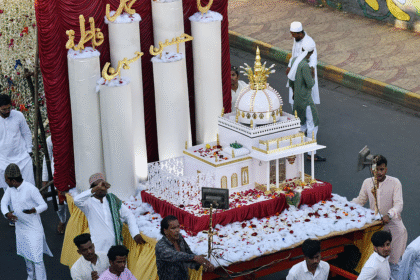Navi Mumbai Blaze: Fire Guts Kharghar Apartment — 0 Casualties Reported
A fire broke out in a Kharghar apartment, Navi Mumbai, leaving the flat completely charred. Thankfully, no casualties or injuries were reported in the blaze
In a startling incident on Wednesday afternoon in the bustling node of Kharghar, Navi Mumbai, a major fire erupted in a 13-storey residential tower, sending thick smoke billowing through the area and reducing a third-floor flat to charred ruins. Fortunately, no lives were lost. Here is a detailed account of the incident, the response, its implications for fire-safety in high-rise homes, and key lessons for residents and property managers.
At around 15:34 on Wednesday afternoon, a fire call was received at the Kharghar Fire Station in Sector 7 of Kharghar, at the residential complex Shree Ravechi Heights (A-Wing, flat number 301, 3BHK on the 3rd floor in a 13-storey building). Within about five minutes a team of fire fighters arrived, having mobilised fire-engines and supporting equipment.
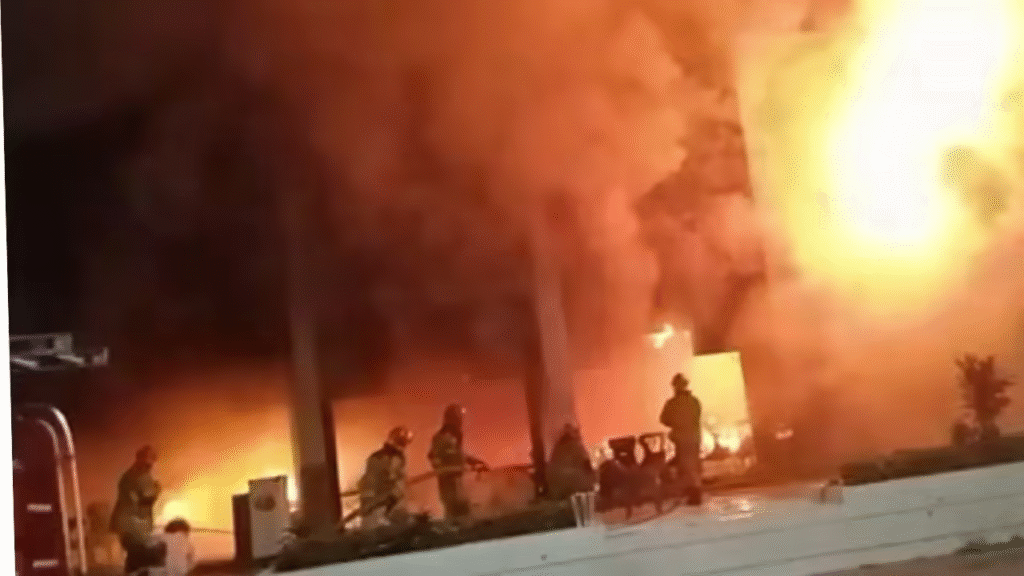
Initial investigations indicate the fire most likely originated from a short circuit in the outdoor AC unit placed in the master bedroom of the flat. The flames rapidly engulfed the apartment, sending smoke into adjacent flats and up through the building’s common areas. The fire service used the building’s internal fire-hydrant system, aided by external fire-engines and a water tanker from the nearby station in Kalamboli.
During operations, one fire-officer, Station Officer Saurabh Patil (35 yrs), entered the smoke-filled apartment without a self-contained breathing apparatus (SCBA) and suffered mild suffocation. He was promptly administered oxygen and is stable.
Evacuation was swift. A total of approximately 25 residents from the building were safely evacuated while the fire-fighting operation continued for roughly three hours. Power supply to the wing was deferred until a thorough inspection of the electrical system by technicians from the Maharashtra State Electricity Board (MSEB) was completed.
Once the flames were extinguished and the smoke cleared, homeowner Mudit Bhatnagar was permitted to enter and inspect the damage. The flat was completely charred, contents destroyed. Luckily, the family was away at the time, which helped avoid what could have been a far worse outcome.
High-rise setting: With 13 storeys, fires in such buildings pose elevated risks of smoke inhalation, difficult evacuation and fire spread between floors.

Rapid spread via AC unit short circuit: A short circuit in an outdoor AC unit is a common ignition source in residential buildings and often happens unnoticed until significant damage occurs.
Smoke and toxic aerosol: Even though flames were largely contained to one unit, dense smoke was present—which is often more lethal than fire itself in apartment fires. That a fire-fighter suffered suffocation underscores the risk.
Potential spread to adjacent units: The quick action prevented the fire from spreading to neighbouring flats on the same floor and upper floors.
Evacuation necessity: About 25 residents were evacuated, highlighting the large number of people who may be at risk in such burn events.
Rapid mobilisation: The fire brigade responded within five minutes of the call.
Use of internal hydrant: The building’s fire-hydrant system was functional and used effectively — fire-engine hoses were hooked to it, helping douse the flames from within.
Coordination between agencies: Fire-fighters from Kharghar, supplemented by a water-tanker from Kalamboli, and the Kharghar Police provisional help for evacuation.
Health risk to firefighters: Smoke spread was intense; the officer entering without SCBA was a serious risk—and was caught early thanks to quick recovery.
Power isolation and inspection: After fire-control, the electrical supply was only restored after inspection by MSEB. This prevented re-ignition from live wires or damaged circuits.
Electrical systems must be maintained vigilantly: Short circuits remain a major cause of residential fires — outdoor AC units, wiring near ducts, old installations all pose risks.

Internal fire-hydrant systems matter: A building may look well-maintained but if internal fire-hydrants, hose reels, pumps and their connections aren’t routinely checked, initial containment becomes difficult.
Smoke spread via ducts: While this particular fire didn’t spread via an unsealed duct, many past incidents in Kharghar and Navi Mumbai saw rapid fire or smoke spread through unsealed ducts between floors.
Evacuation planning is crucial: In multi-storey buildings, safe and swift evacuation of residents is a major challenge — stair-wells, refuge zones, clear signage, regular drills matter.
Fire-fighter safety protocols: Entry into smoke-filled units demands SCBA and clear protocols; the fact that a fire-officer suffered suffocation is a caution point.
Prompt restoration and inspection of utilities after fire: Electrical systems that are damaged during fire can cause subsequent risks; formal inspection before restoring power is a key safety step.
Resident awareness: The fact the family was absent likely saved lives. If they had been inside and the fire had spread, the outcome might have been tragic.
Schedule periodic electrical audits: Especially check outdoor AC units, wiring joints, extension cables, old circuits.
Test fire-hydrant and hose-reel systems: Quarterly checks should verify that water pressure, hoses, reel functioning and hydrant taps are operational.
Seal vertical ducts and service shafts: Prevent fire or smoke migration from one floor to another via service ducts—this is a major vulnerability.
Conduct evacuation drills: At least once a year simulate an emergency to familiarise residents with muster points, staircase use, floor-wardens and exit plans.
Display emergency numbers and plans: Notice boards should list the nearest fire-station number (for Kharghar station, see official list).
Install smoke-detectors and alarm systems: Early detection and alarm alerting residents and neighbours is vital.
Ensure clear access for fire-engines: No vehicle should block access roads, ramps or hydrant valves around the building.
Educate residents: Encourage safe practices – for example turning off AC units when away, not overloading sockets, using certified electrical appliances.
The fire in Kharghar is not an isolated incident. In the past several months similar fires in high-rise apartments in the area have been attributed to short circuits and duct spread of smoke—resulting in evacuations and injuries though (thankfully) no major fatalities.Local civic authorities — including the Panvel City Municipal Corporation (PCMC) fire brigade — have launched drives to inspect fire safety compliance across multiple nodes including Panvel, New Panvel, Kamothe, Kalamboli, Rodpali and Taloja.
These inspections will review fire-NOC renewals, internal fire-system functionality, lifts, alarms, emergency exits, electrical wiring and escape routes. The urgency is mounting — high-rise living demands elevated safety standards and proactive management. The recent blaze in Kharghar spotlights how fast a fire can compromise a home and endanger multiple units.
For residents: Stay alert. Don’t assume fire safety is taken care of by someone else. Ask your society about the last fire‐drill, check the condition of fire-hydraulics, know where your muster point is.
For building committees and managers: Prioritise fire audits. Factor in cost of fire-safety upgrades as part of maintenance. Ensure contractors servicing hydrants and electrical systems are licensed.
For authorities: Strengthen enforcement of sealed-duct regulations, those that prevent vertical spread of fire and smoke. Ensure fire-stations are sufficiently resourced for rapid response. Encourage public-awareness campaigns about residential fire risks.
For visitors & brokers: If you are looking at high-rise apartments, ask about fire-safety certificates, date of last inspection, and whether internal hydrants and alarms are functional.


